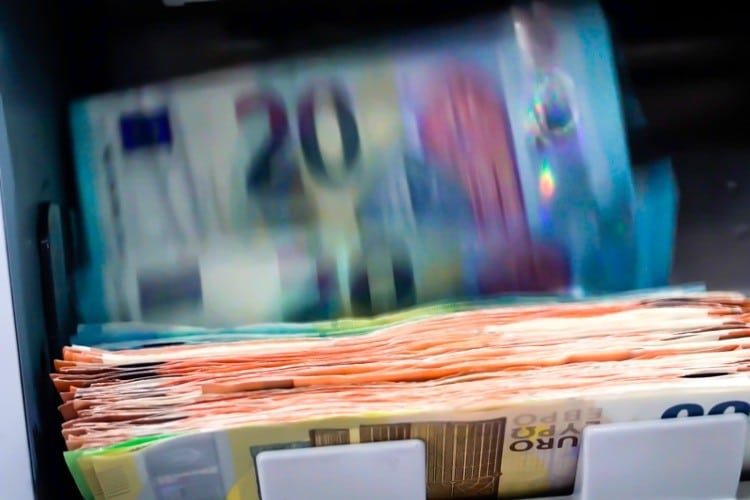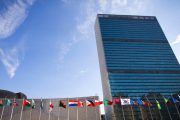
Following four days of discussions in Warsaw, Poland, staff from the International Monetary Fund (IMF) and Ukrainian officials arrived at an agreement that the IMF would provide Ukraine with $15.6 billion in the next four years.
The agreement, known as the Extended Fund Facility (EFF) Arrangement, is part of a four-year economic campaign to support Ukraine through the conflict against Russia as well as reconstruct the country with the intention of possible accession to the European Union (EU).
During the talks, IMF officials lauded Ukraine for its economic management during the Russo-Ukraine conflict that broke out last February. However, these officials also admitted that the conflict has caused widespread destruction to lives and property as well as geopolitical stability.
“In addition to the horrific humanitarian toll, Russia’s invasion of Ukraine continues to have a devastating impact on the economy: activity contracted by 30 percent in 2022,” the IMF declared in a press release.
Ukraine needs cash inflows to continue functioning and service its high amounts of debt. IMF officials predicted that Ukraine’s economy would make a slight comeback in the not-so-distant future.
Although the IMF’s executive board has not granted its final authorization to the EFF, it is poised to do so. According to reports by Euractiv, the EFF will be the IMF’s largest loan to a country involved in an active military conflict after just changing a rule to permit new loan programs for countries facing “exceptionally high uncertainty.”
Moreover, the EFF is also supposed to enable considerably more financial support from international donors and globalist entities such as the World Bank.
In turn, Ukrainian Prime Minister Denys Shmyhal expressed his gratitude to the IMF on social media:
“In conditions of a record budget deficit, this program will help us finance all critical expenditures and ensure macroeconomic stability and strengthen our interaction with other international partners,” he said.
Notably, the EFF came around the same time with EU pledges to supply Ukraine with one million rounds of 155mm artillery shells as well as missiles, if requested by Ukraine, in the next year. Josep Borrell, the European Commission’s foreign relations chief, claimed that the military pledge to Ukraine was more about aiding Ukraine to fend off Russia. That being said, this move signals a major shift in military spending and a new stage in the development of the European Defence Agency (EDA).
As part of the agreement, EU member states have the option of signing up to jointly procure ammunition through the EDA, set up in 2004 as an area for security and defense cooperation among EU countries.
The plan entails using EU member states’ present stockpiles to supply Ukraine with ammunition immediately, unveil a joint procurement program to be able to provide at least another €1 billion to Ukraine until the end of the conflict, and invest in the bloc’s arms production sector to increase future defense and deterrence capabilities.
“The objective is to deliver, and to deliver fast,” Borrell said of the plan in the short run.
Nonetheless, not every EU member state opted for all aspects of the plan. In particular, more than a third of member states opted out of the joint procurement program — with its tender under the EDA’s purview.
Seventeen countries have already signed up for the agreement, with Borrell anticipating at least 20 countries in total to be involved, adding that he believes that the deal was a watershed moment in the history of the EDA, which he also chairs.
This agreement is the EU’s first joint procurement of arms and, based on reports by Euractiv, all arms must be produced within the EU and cannot be obtained from third-party countries.
“This agreement will put the European Defence Agency in orbit. They will have to deliver on concrete results, on some concrete endeavor. Not just about possibilities, but working on something that has a clear deadline, that mobilizes a lot of financial resources, that requires a strong [cooperation] with the [defense] industry,” Borrell remarked during a press conference. “This is going to be important for the European Defence Agency to reach a certain degree of maturity on the tasking that the European treaties have given to this institution.”
Euractiv further reported German Defense Minister Boris Pistorius portraying the agreement as “new territory” for the EU, whereas Estonia’s Foreign Minister Urmas Reinsalu said that it reflected the start of a “systematic approach” to helping Ukraine. “Definitely there are many details still to solve, but for me it is most important that we will conclude these negotiations, and it shows me one thing: if there is a will, there is a way.”
Besides, the ministers agreed to possibly include another €3.5 billion to the European Peace Facility, an off budget-fund for “enhancing the Union’s ability to prevent conflicts, build peace and strengthen international security.”
Significantly, Borrell announced that the EU had left an epoch of economic peacebuilding with its current military defensive stance. He elaborated that the ministers had agreed to consider raising the EPF’s pot of money “knowing that there will be more needs, not only for Ukraine but for more countries around the world.”
Highlighting the gravity of the current geopolitical situation in Europe, Borrell said, “Since the end of the Cold War, Europeans, we have been decreasing our military capacity. That’s a fact.”
“And now suddenly we need to increase it because the environment has changed dramatically,” he added.
Last December, the European council decided to add another €2 billion to the aforementioned fund to reimburse member states that provide ammunition to Ukraine. On March 14 this year, the council increased the EPF ceiling to €7.98 billion until 2027.
Apart from Ukraine, the EU Council recently used the EPF to pledge money other EU member states as well as to African countries. For instance, in December 2022, the council agreed to bankroll Bosnia and Herzegovina, Georgia, Lebanon, Mauritania, and the Rwanda Defense Force in Mozambique by means of the EPF.



